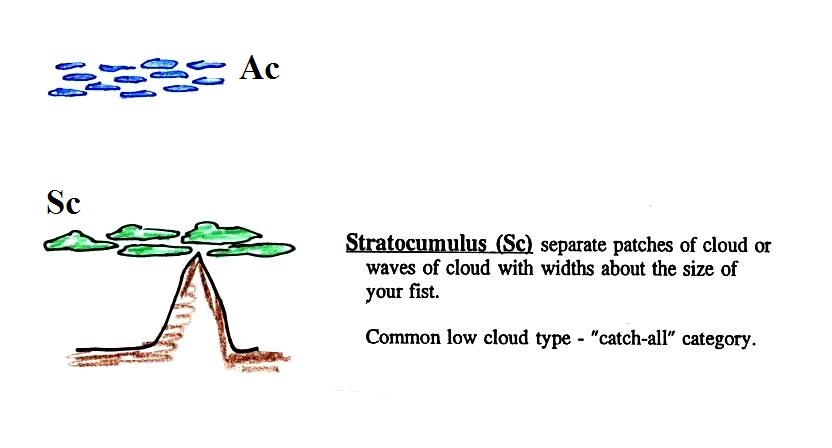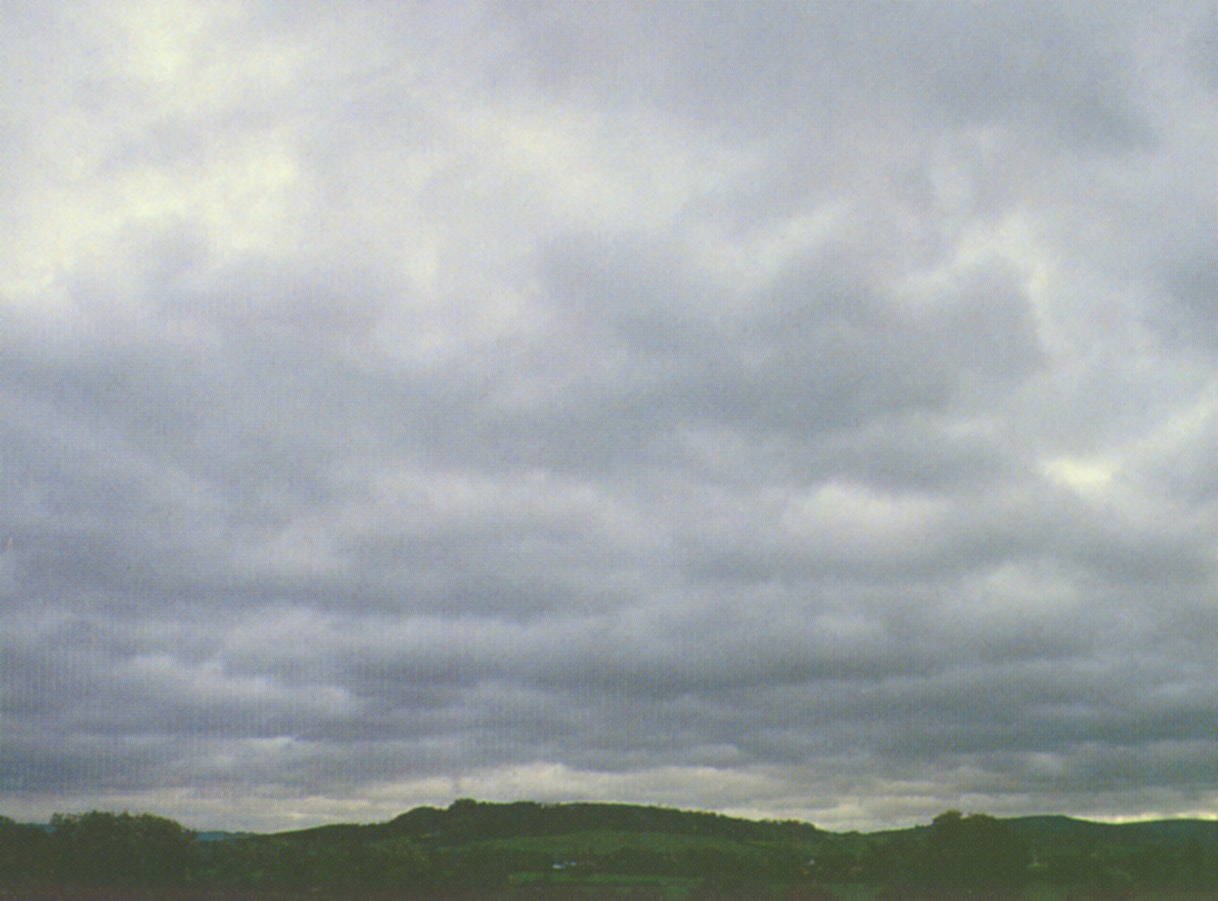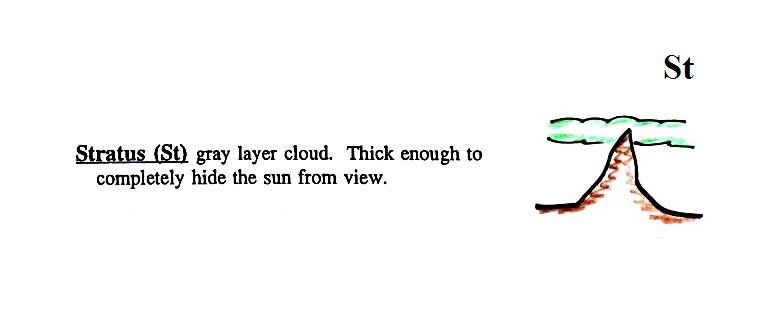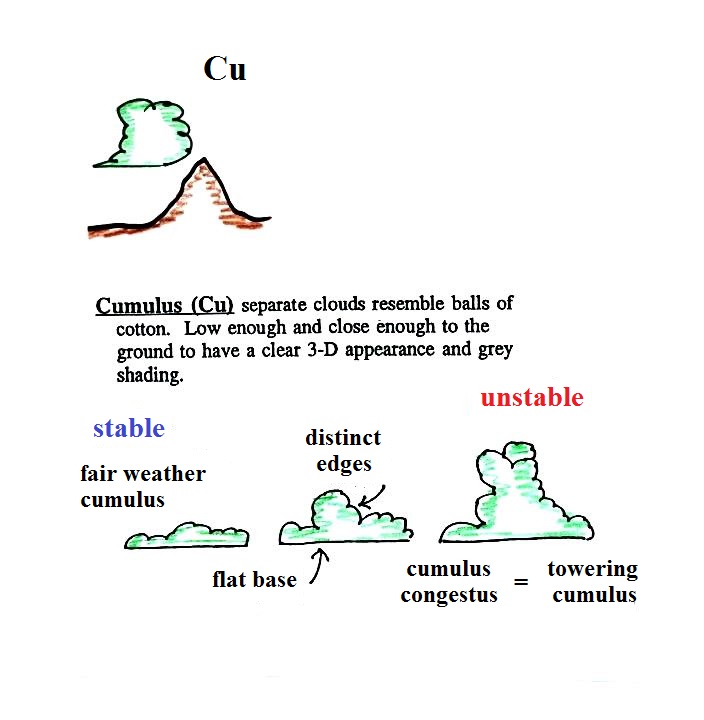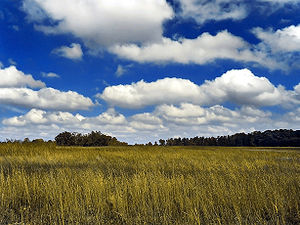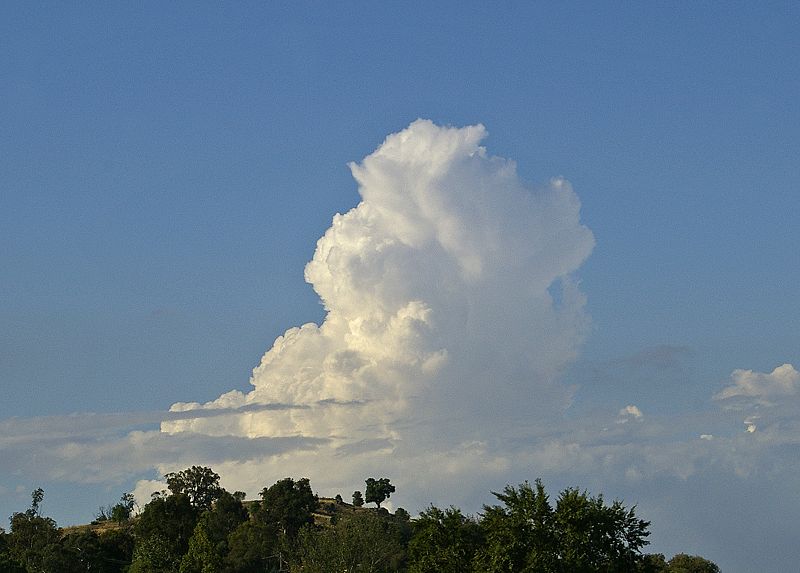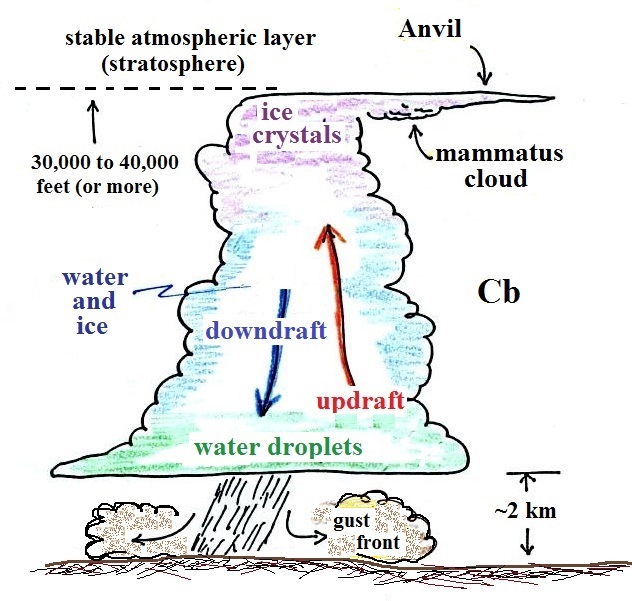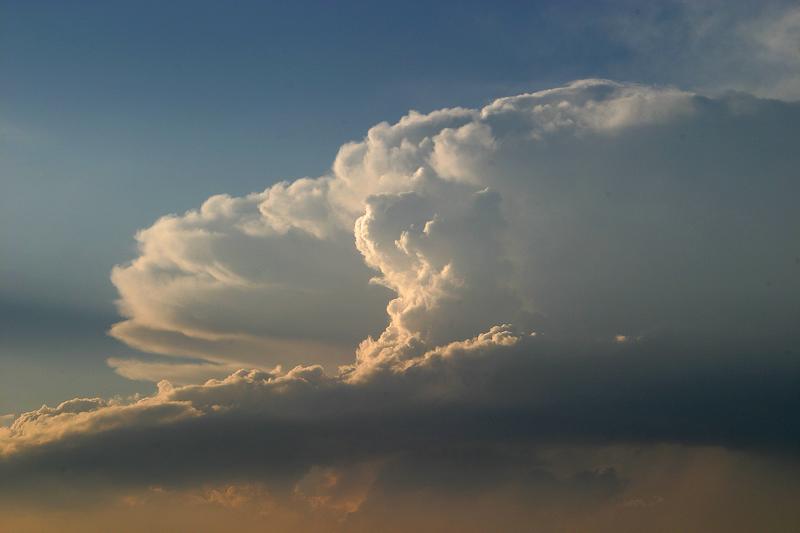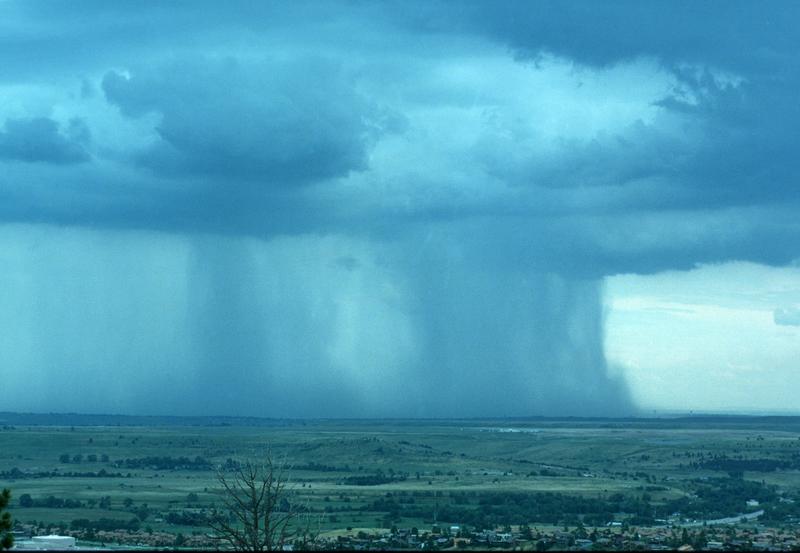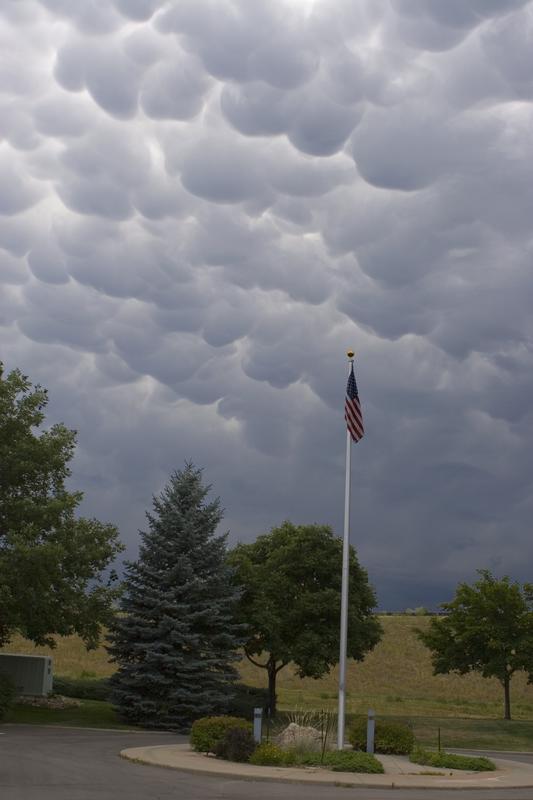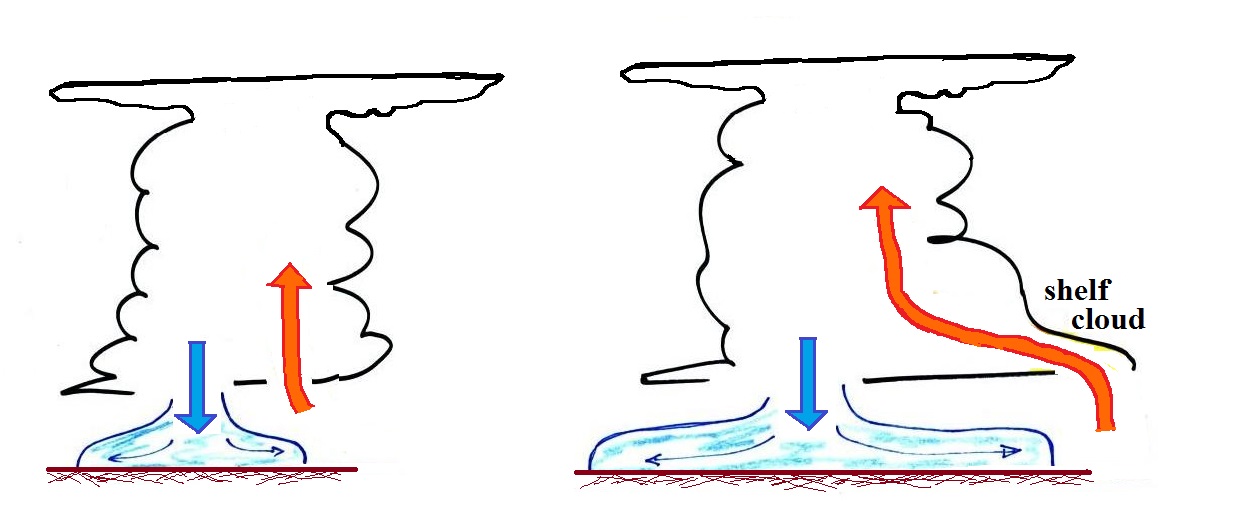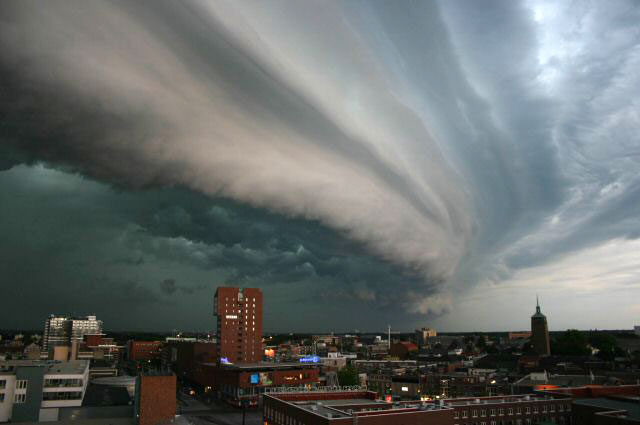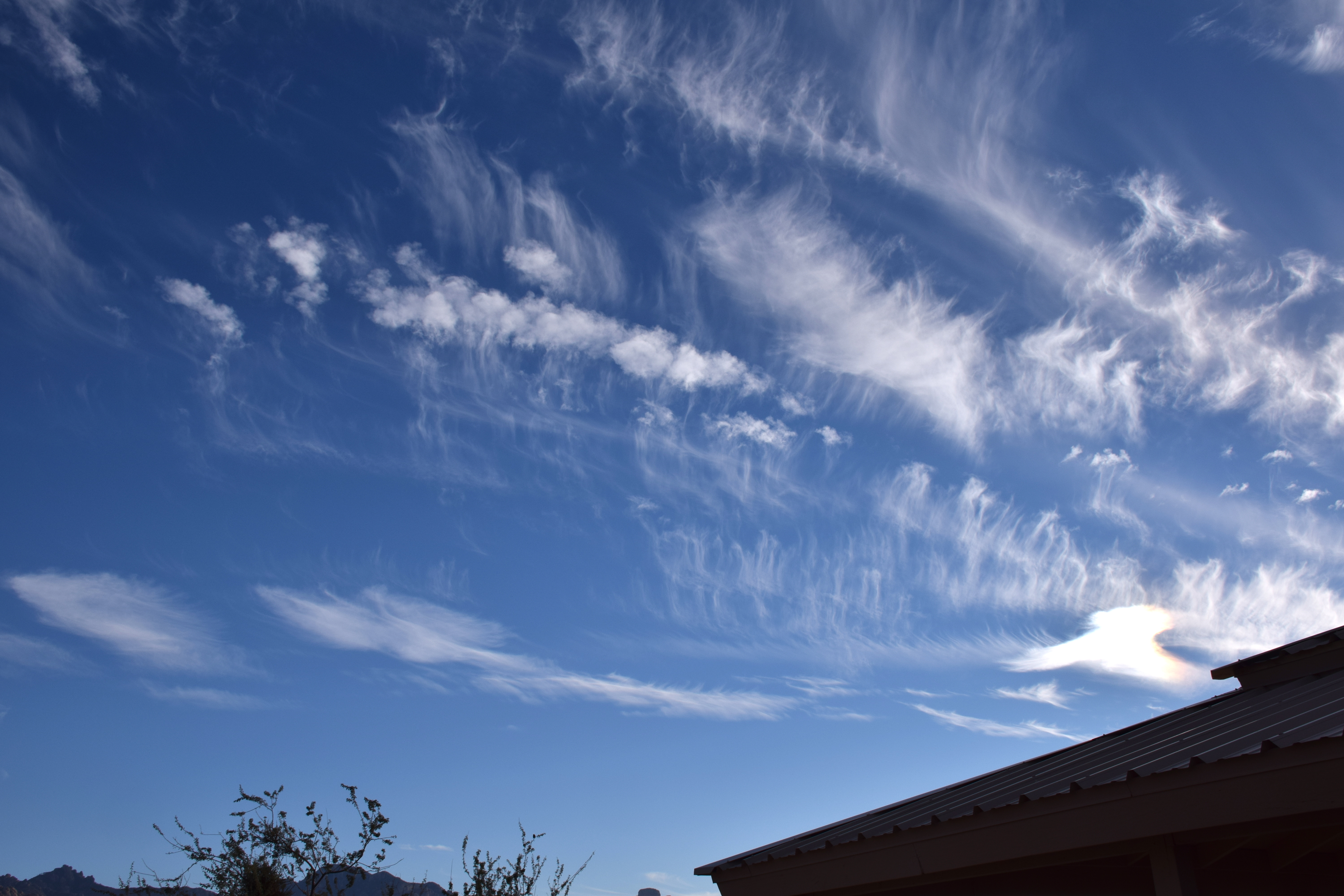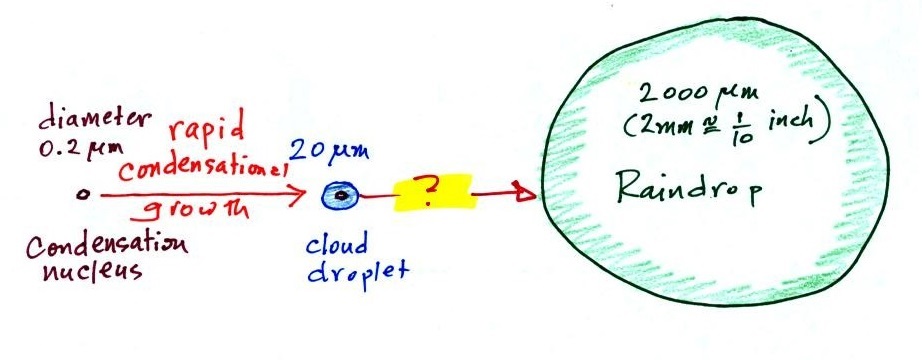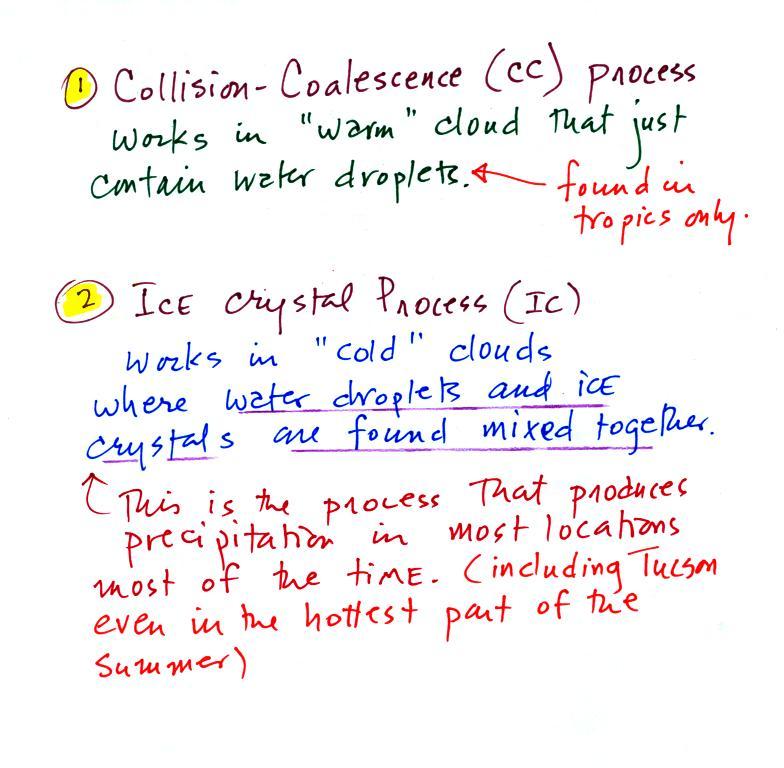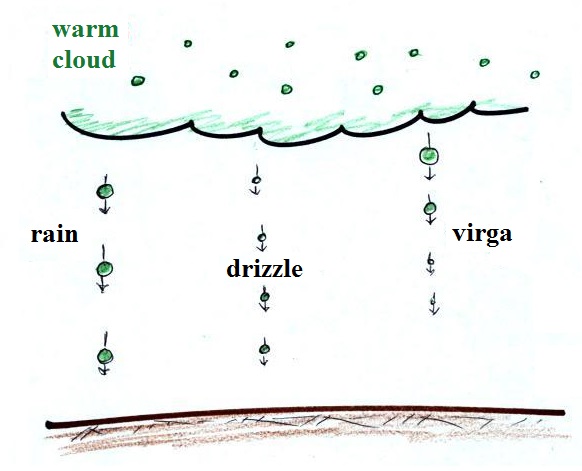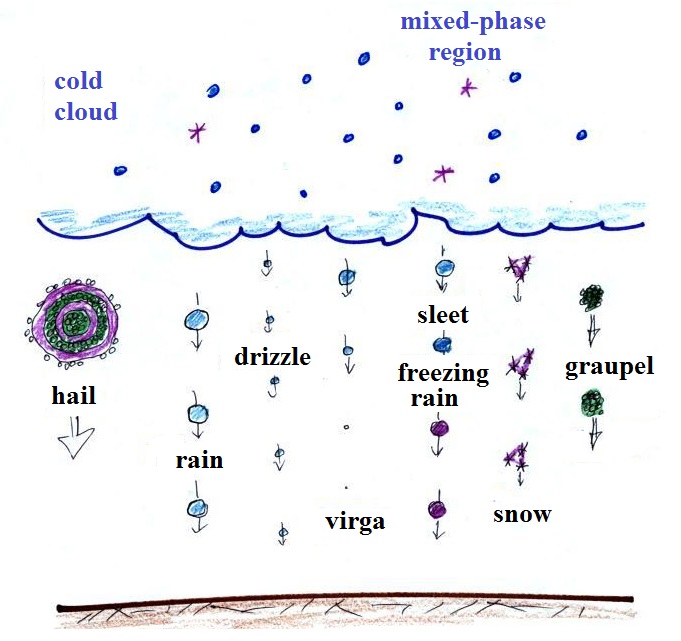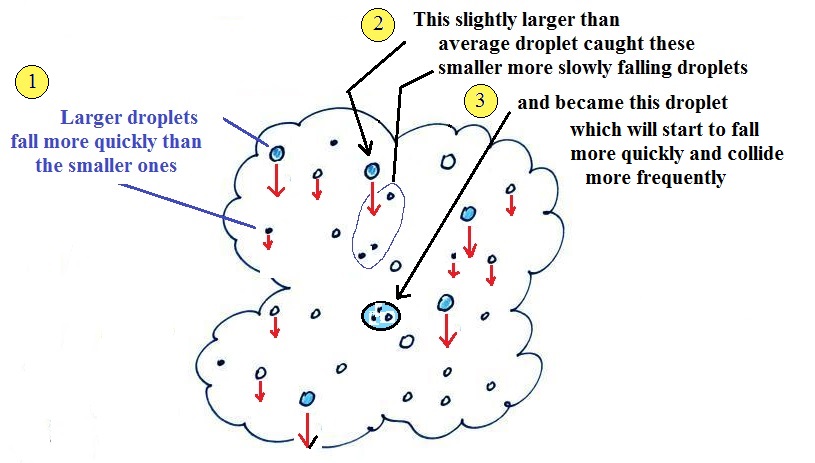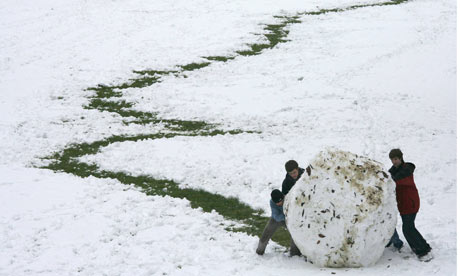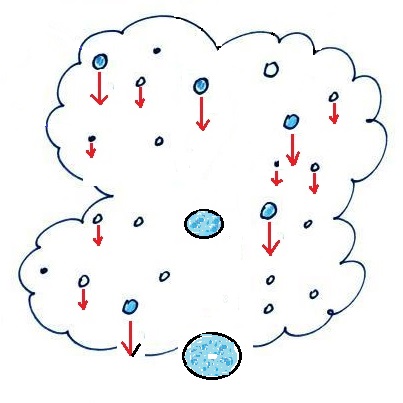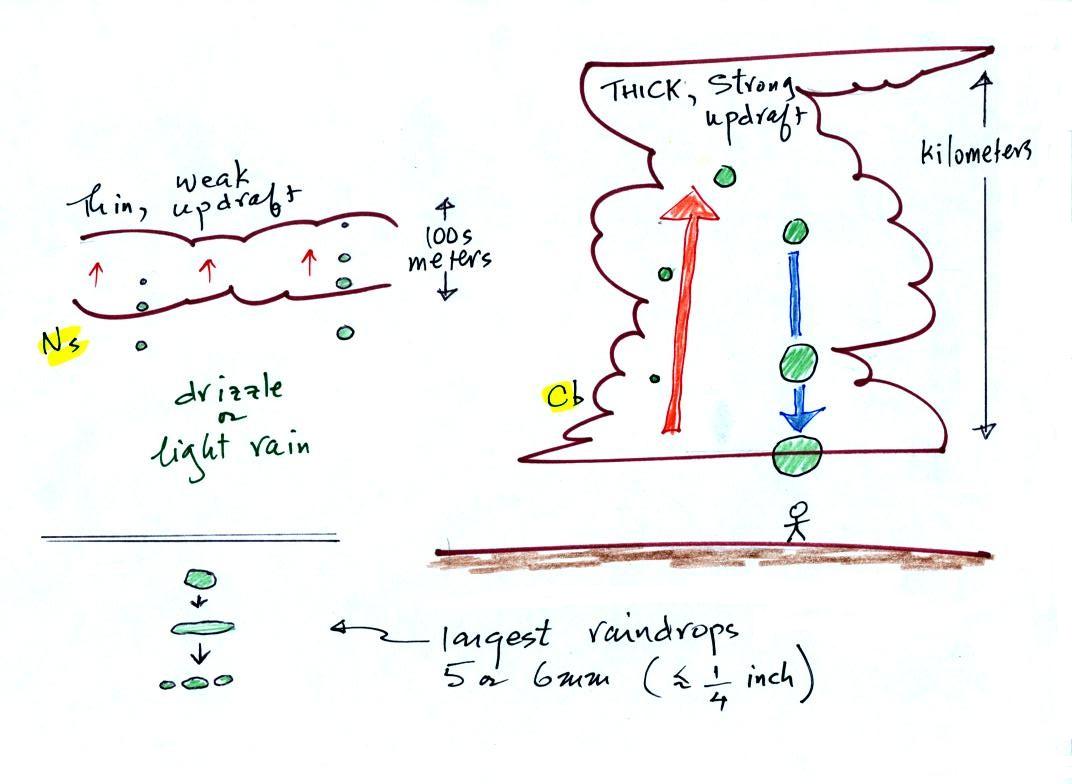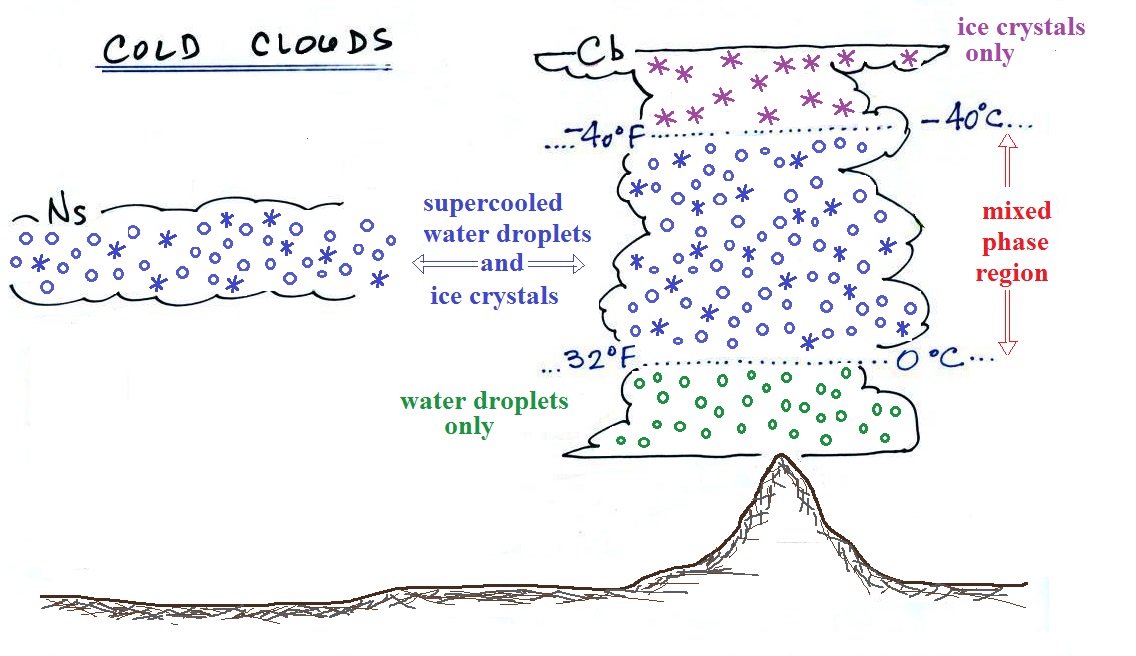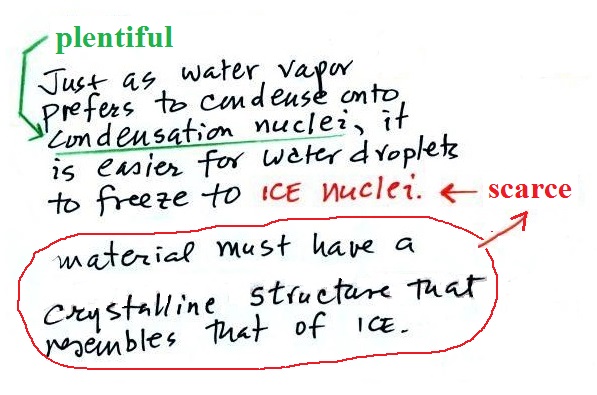There
are lots of distinctive features on cumulonimbus clouds
including the flat
anvil top and the lumpy mammatus
clouds sometimes found
on the underside of the anvil.
Cold
dense downdraft winds hit the ground below a
thunderstorm and spread out horizontally underneath the
cloud. The leading edge of these winds produces a
gust front
(in Arizona dust front might be a little more
descriptive and easier to remember). Winds at the
ground below a thunderstorm can exceed 100 MPH, stronger
than many tornadoes.
The top of a thunderstorm
(violet in the sketch) is cold enough that it will be
composed of just ice crystals. The bottom (green) is
composed of water droplets. In the middle of the
cloud (blue) both water droplets and ice crystals exist
together at temperatures below freezing (the water
droplets have a hard time freezing). Water and ice
can also be found together in nimbostratus clouds.
We will see that this mixed phase region of the cloud is
important for precipitation formation. It is also
where the electricity that produces lightning is
generated.
